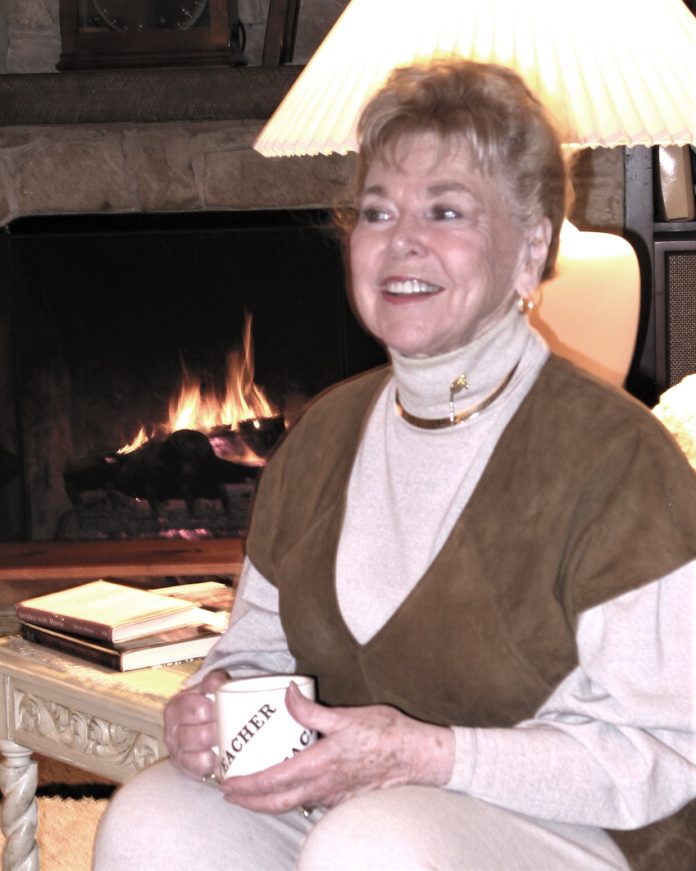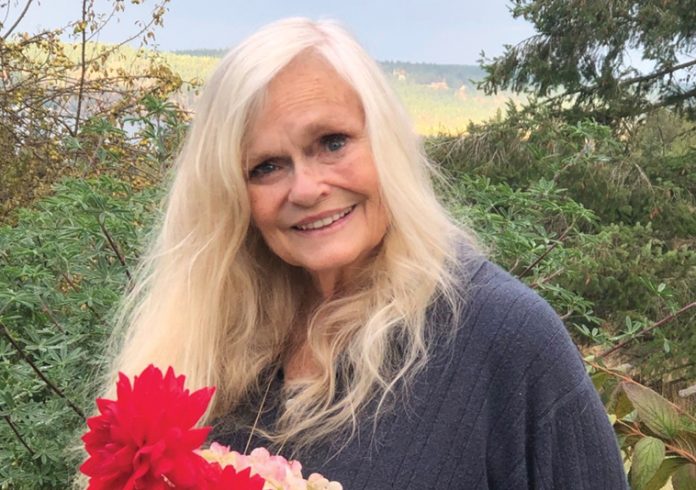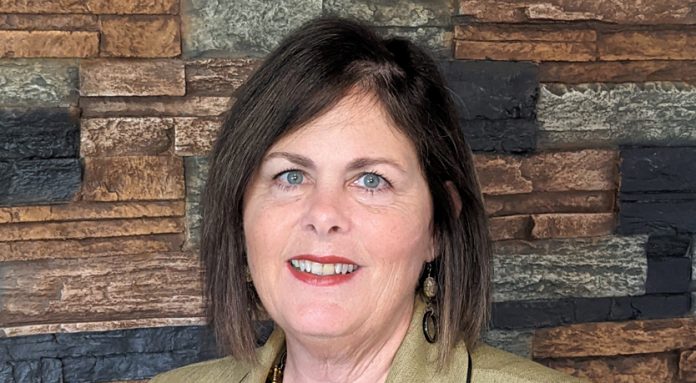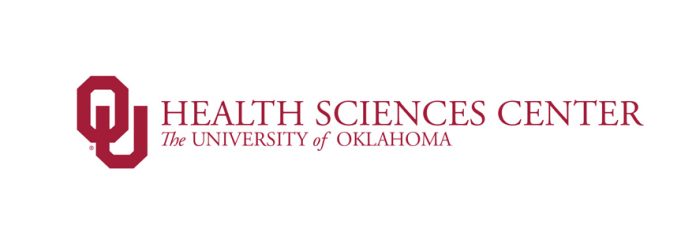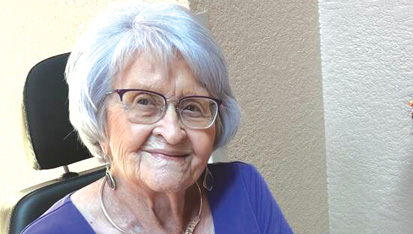Stillwater Medical announced the launch of a new Ceribell Rapid EEG Brain Monitoring which provides Stillwater Medical clinicians with immediate access to EEG information, allowing triage for at-risk patients in just 5-minutes and continues to monitor for treatment optimization.
The Ceribell Rapid EEG Brain Monitoring system was developed to address limitations in EEG acquisition and interpretation so patients at risk of seizure can be triaged more quickly. The device consists of a simple headband, pocket-sized recorder with intuitive software, and an on-line portal for remote viewing. Using the Ceribell system, physicians can review EEG data, assess response to treatment and optimize care, all in real-time.
Mary Beth Hunziker, MSN, RN, ACNS-BC, CCRN, Director of Stillwater Medical’s ICU, explained that critically ill patients are at substantial risk of seizures that cannot always be detected by outward signs, and without rapid diagnosis it can lead to permanent brain injury, higher risk of morbidity and mortality, and longer hospital stays. She said Ceribell can be set up by any healthcare provider in just 5-minutes, even those with no previous training in EEG.
Guidelines from the Neurocritical Care Society recommend EEG should be initiated within 15-60 minutes when these seizures are suspected. Meeting these guidelines has proven difficult due to the limitations of conventional EEG systems, which were not designed for use in emergency situations. Without Rapid EEG, even top academic centers with 24/7 EEG capability experience a 4-hour wait-time for conventional equipment.
“This device is a game changer for Stillwater Medical,” said Hunziker. “It will provide our clinicians with the diagnostic information they need to make informed treatment decisions for some of our most vulnerable patients quickly. It’s another great example of our Stillwater Medical leadership putting patient safety at the forefront.”
“Ceribell founders saw that critically ill patients often experience undiagnosed non-convulsive seizure as a result of lack of access to EEG. Some suffered major neurological deficits while others simply did not make it. It is our mission to ensure no patients suffer unnecessary brain injury as a result of not having prompt EEG. We are excited to see visionary pioneer health care practitioners at Stillwater Medical adopting the technology and transforming their EEG capability.” Jane Chao, PhD, Co-founder and CEO of Ceribell.
STILLWATER MEDICAL FIRST IN STATE TO LAUNCH CERIBELL RAPID EEG BRAIN MONITORING
OMRF receives $2.1 million to study vessel development
The National Institutes of Health has awarded $2.1 million to an Oklahoma Medical Research Foundation scientist for the continued study of lymphatic vessels.
Experiments funded by the five-year grant to vascular biologist Pengchun Yu, Ph.D., will focus on turning on and off the mechanisms that trigger production of these vessels.
Lymphatic vessels form one of the body’s two superhighway systems. Blood vessels transport blood, oxygen and nutrients throughout the body. Lymphatic vessels collect lymph – the fluids that leak from blood vessels – and return it to the bloodstream.
While normally beneficial, lymphatic vessels sometimes sabotage healing. For instance, these vessels contribute to organ rejection after a transplant. The reason: Lymphatic vessels also transport immune cells, and these cells often recognize the donor organ as foreign.
Separately, cancer cells use lymphatic vessels to metastasize or spread to other parts of the body. “That’s why during a breast cancer surgery, surgeons remove lymph nodes to find out how far tumor cells have traveled and to help reduce metastasis by disrupting their highway,” said Yu, who joined OMRF in 2018 from Yale University.
However, removing the lymph nodes can lead to lymphedema, a chronic and potentially dangerous condition marked by painful swelling.
“In that case, when a patient is past the point of the cancer cells spreading, the surgeon would want to reconnect that highway to stop or treat lymphedema,” Yu said. “They need strategies to disrupt and promote the growth of lymphatic vessels, as the situation requires.”
With this new grant, Yu hopes to prove that a specific enzyme is key to producing lymphatic vessels. If correct, this hypothesis could lead to a therapy that inhibits the enzyme and suppresses the creation of these vessels when they might be detrimental. Another potential drug would have the opposite effect by promoting vessel production, he said.
OMRF Cardiovascular Biology Program chair Lijun Xia, M.D., Ph.D., said Yu’s grant represents a critical step toward manipulating the lymphatic system for human health benefits. “Lymphatic vessels influence the health of several organs, but we lack a deep understanding of how they work,” Xia said. “This research could be a major advancement in that effort.”
Yu’s grant, 1R01HL162985-01, is funded by the National Heart, Lung, and Blood Institute, a part of the NIH.

Deer, Bear Archery Seasons Among Hunting Openers Set Oct. 1
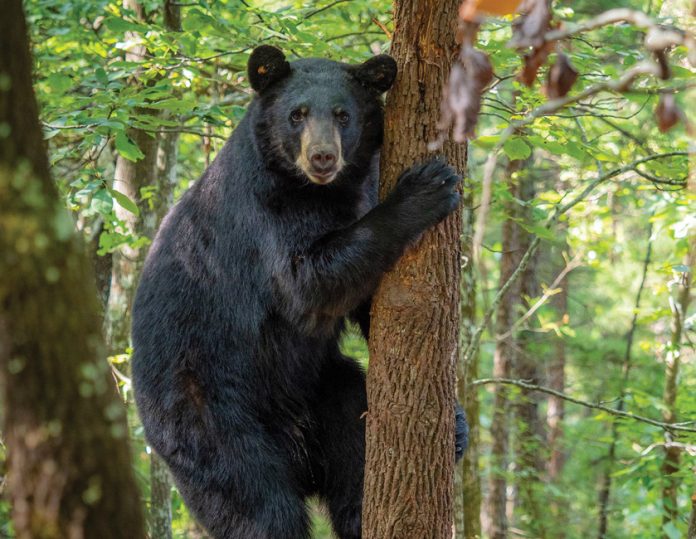
Oct. 1 will be a busy day for thousands of “stick-and-string” hunters in Oklahoma. That Saturday is when several archery hunting seasons will open across the state. Those seasons are:
* Deer archery, running through Jan. 15, 2023.
* Elk archery, on private lands through Jan. 15, 2023 (or until quota is met).
* Black bear archery, running through Oct. 16.
* Fall turkey archery, running through Jan. 15, 2023.
* Pronghorn antelope archery, running through Oct. 14.
The popularity of archery hunting continues to grow in Oklahoma. For the third year in a row, archery deer hunters set a record with 36,522 deer taken, which accounted for 31 percent of all deer harvested in the state last year.
The annual Game Harvest Survey (GHS), a scientific survey conducted by the Wildlife Department, has been tracking hunter metrics for decades. The GHS estimated that 117,216 archers took to the field this past season with a deer license in hand.
“Another off-season has come and gone. Big game hunters will be heading back to the woods come October 1st and have a lot to look forward to,” said Dallas Barber, Big Game Biologist with the Oklahoma Department of Wildlife Conservation.
“Populations are in good shape even amid the drought conditions that plagued much of the state during the summer. These first few weeks can be tough due to warm conditions, so archery hunters might place more effort in that first and last hour of legal shooting light.”
Barber said the early season is an ideal time to capitalize on antlerless deer opportunities. Why not fill the freezer before focusing on bagging that big buck?
According to the 2021-22 Big Game Harvest Report published in the September/October issue of Outdoor Oklahoma magazine, archery hunters took 16,097 antlerless deer compared to 20,425 antlered deer.
“Doe harvest is critical to keeping a herd healthy,” he said. “It’s again time for hunters to meet the challenge to let young bucks grow and take a doe.”
In southeastern Oklahoma, archery hunters took 66 black bears last year. Senior Wildlife Biologist Jeff Ford said the summer’s hot and dry conditions could make this year’s bear hunting more challenging.
“These conditions may affect the fall mast crop, making it harder to find some good bear sign in the woods. So concentrate on water resources to find sign. Bears will frequent watering holes when the weather is hot.
“I would say the most important thing … is to find an area with fresh bear sign and then just stay with it. Most successful bear hunters start early in the season, and you may have to sit all day.”
Ford suggests public land hunters should scout as early as possible for areas with acorns (preferably white oak), which are most preferred by bears. “The acorns will start falling around the first of October, and bears are going to be searching them out.”
Bear hunters (including lifetime license holders) must buy a bear license before the season opens, as those licenses will not be sold after Sept. 30.
For complete regulations — including required licenses, open areas, harvest quotas, and reporting requirements — consult the 2022-23 Oklahoma Fishing and Hunting Regulations online at www.wildlifedepartment.com, on the Go Outdoors Oklahoma mobile app or Apple or Android, or in print free at license dealers statewide.

VillagesOKC receives grant from Force 50 Foundation for veterans program
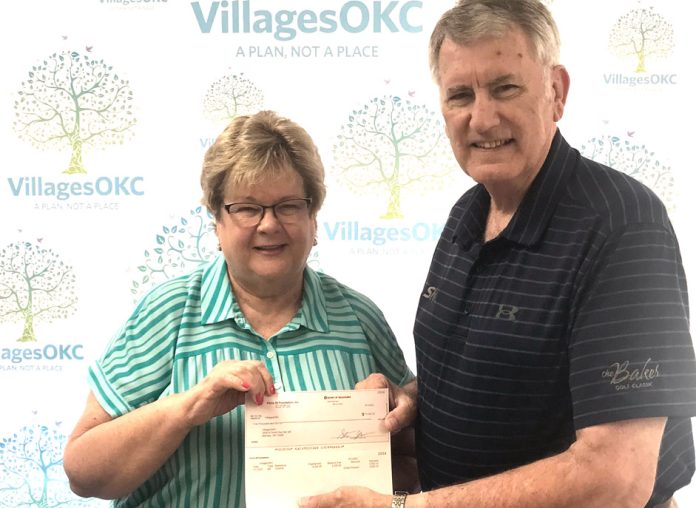
Story and photos by Eddie Roach
VillagesOKC received a $5,000 grant from Force 50 Foundation to be used to implement a veterans initiative called One-On-One Honor.
“This grant will be used in our pilot program seeking to bring awareness of the importance of bringing honor and patriotism into everyday life,” said Marilyn Olson, VillagesOKC Executive Director.
The program will honor veterans in assisted living and low-income senior housing. Identified veterans will be honored in a ceremony at their facility and receive a veteran cap, service pin, photo, and certificate. The presentation will be conducted by a fellow veteran.
“VillagesOKC is part of the annual Vietnam War Era Pinning Ceremony each March 29 at the Oklahoma History Center. But, this One-On-One Honor program awards those who are in assisted living communities and cannot attend the annual pinning ceremony,” Olson said.
Gary W. Banz, Force 50 Foundation Executive Director, said the grant application was open to any of the foundation’s partner agencies. VillagesOKC was selected because its mission of connecting older adults to opportunities and services in the community is like Force 50 Foundation’s objectives.
“We value a ‘One Mission, One Force’ network as the best way to connect organizations serving veterans,” Banz said. “What we are all about is providing a platform for information sharing, connecting veterans to the various support opportunities.” He explained that while there are many organizations offering veterans services, vets don’t always know where to look.
VillagesOKC embraces a similar mission of connecting older adults to programs for learning, planning, and serving – providing a plan for aging that connects a community.
Gaylene Stiles, who submitted the grant for VillagesOKC, said the project also will engage Southern Nazarene University students from the SNU Veteran Center, providing an opportunity for students of all ages to observe and participate.
VillagesOKC is a nonprofit that connects adults ages 55+ in the greater Oklahoma City metro area to valuable resources that empower them to remain independent and age gracefully. VillagesOKC consists of virtual neighborhoods of volunteers who share vital connections, education, and programming with members to improve their quality of life.

Partnership aims to help seniors
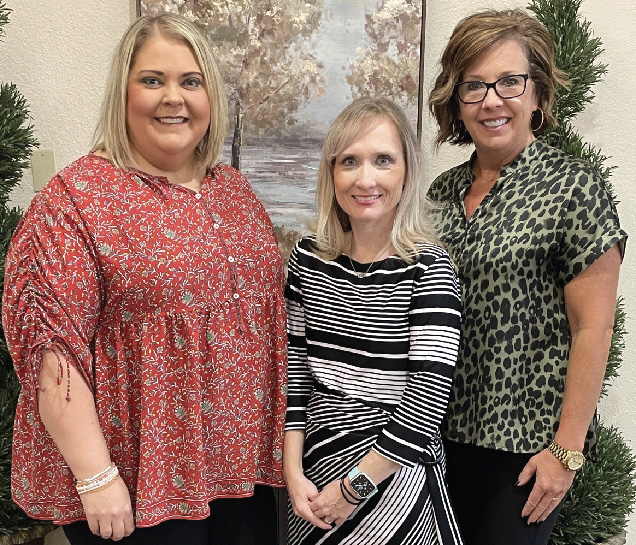
Story and photo by Bobby Anderson, Staff Writer
Living decisions for seniors can be complicated all by themselves.
Throw in an unexpected illness or injury and the situation can quickly spiral out of control.
After seeing these situations play out over and over and the turmoil they create for families, local senior living leaders have come together to provide awareness through education.
Melissa Mahaffey, MHA, serves as the executive director of Tealridge Retirement Community and is one member of a group focused on bringing information to those needing it the most.
“We want people to know we’re in this industry together and we don’t necessarily have to be owned and operated by the same company to put on great resource events and work together for the betterment of the larger community,” Mahaffey said. “We just want to provide a resource. We partner because we feel like we have the same type of philosophy in terms of we want the community to know and what some of the options are.”
Communities like Tealridge and Legend at Jefferson’s Garden have long focused on giving residents just the right amount of personalized support to enhance independence.
But in an industry that can have an array of service levels people can quickly get lost.
“They hear one word and they automatically go down a rabbit hole. It’s educating on all levels,” said Tealridge Retirement Counselor Kristen Moss.
Finding information on those levels is the focus of a series of upcoming progressive tours and educational presentations.
“I think we want to encourage people not to start looking when there is a crisis but be educated prior because they could help their family, their neighbor or someone within their church,” Mahaffey said. “That’s why we need people to understand we are offering this.”
“During each progressive tour stop people will get to touch and feel what we do here. We want people not to be afraid to ask questions. We encourage everyone over the age of 60 to come.”
Unfortunately, decisions regarding the next level of care often occur within 24 to 48 hours prior to a loved one needing care. All too often an injury or illness has landed a loved one in the hospital and the determination has been made that further care is needed after discharge.
What shape and form that care comes in is often a mystery to those charged with making a decision on behalf of their loved one.”
Moss said the scenario plays out time and again, forcing people into crisis mode.
“Then somebody ends up in the hospital and it’s go time,” Moss said. “It’s Wednesday and the hospital is going to release on Friday and we have to go somewhere.”
And then there’s the issue of cost and where funding will come from.
Skilled nursing days are limited under Medicare.
Independent and assisted living costs are excluded altogether.
“Education is so important because they don’t know,” said Kristi Wilhelm, sales director at Legend at Jefferson’s Gardens in Edmond. “I had a family that literally walked into my building and she realized mom is exhausted from taking care of dad and mom’s fixing to go downhill if she doesn’t do something.
“She didn’t know what independent living is. She didn’t know what assisted living is. I was with them for two hours going through all the steps.
“She was so relieved I educated her and explained everything to her.”
And learning that information when not facing a deadline can make the difference between the right decision and a decision for right now.
“And a lot of times people in that emergency, the first place they go to they’ll end up moving in and it might not actually be the right fit for them,” Wilhelm said. “Eventually they start shopping again because they’re not happy because mom isn’t happy. That’s why it’s all about education so it’s not the last minute.”
Mahaffey said the program is unique to the metro but expects it to expand quickly because at the end of the day it comes down to the right fit for both the resident and the residence. “I always tell people when they come to visit our community know that if I’m not the one you chose, I’m still here as a resource to help you in any way. They appreciate it so much,” Wilhelm said.
Tealridge Retirement Community is a full-service retirement community located at 2100 NE 140th Edmond.
Legend at Jefferson’s Garden specializes in assisted living and is located at 15401 N Pennsylvania Ave in Edmond.
For more information about Tealridge Retirement Community visit http://www.tealridge.com

TRAVEL/ENTERTAINMENT: Entertainment: Reserve it and Enjoy it.
Photography and Text by Terry “Travels with Terry” Zinn t4z@aol.com

The area is full of many live theater options, and if you don’t reserve your seat in advance you might lose out. If you schedule it, it will happen. If you don’t, it won’t.
Of course you can get in trouble as I did this summer when I bought a nonrefundable ticket to NYC’s Broadway production of Music Man, which I know would win lots of Tony’s and be in high demand in the fall. I scheduled my NYC trip complete with air and hotel reservations for mid October. With a recent physical accident I had to cancel the trip and try and pass along my $400 orchestra aisle ticket to a NYC resident. I don’t regret the buying of it or the canceling of the trip. Reality Bites.
Getting a season subscription to theater nearer your home, you can be relativity sure you can make it. Season subscriptions are the way to go – reserved seats and definite theater times for your calendar
I consider the professional reputation of theater before putting down a lump sum for future enjoyment. One such professional troop is the Prairie Sky Opera Company, who always produce excellent casts who shine with the meaningful and difficult medium of Opera. Recently I took in their Scalia / Ginsburg opera of supreme court justices in the OKC Contemporary Arts. They did not disappoint in this intellectual and ironic story of 2 supreme court justices. Outstanding was the performances of Brian Cheney, Lauren Cook, Jonathan Moots and direction by Rob Glaubitz. It concluded their regular season. Coming up is their Opera Gala at the Skirvin Hotel in OKC on Oct 14th in honor of well known Oklahoma City University voice profession and entertainer, the late Florence Birdwell. Space may be sold out but you might check it out at www.prairieskyopera.org.
I recently happened upon some home town talent at St Luke’s Methodist Church’s Broadway Revue. The local talent was good for the most part and the Broadway theater selections were exceptional. Their Poteet Theater Season (stlukesokc.org/poteet) is about to begin with: Spelling Bee. Season tickets are available.
The Professional company touring shows of OKC Broadway (www.okcbroadway.com/about) always delivers top notch talent with the material they offer in big theater productions in the OKC Music Hall downtown. Their recent tour of Pretty Woman, was week in material and the casting needed some charismatic personalities. But that’s the chance and joy you take with live theater. While the season tickets might be sold out, you can usually get a single ticket somewhere in the massive auditorium. Coming up is: Hadestown, Tootsie, Cats, Book of Morman and Hamilton.
Lyric Theater of Oklahoma never disappoints which can be proven by experiencing the upcoming shows of: Rocky Horror Picture Show, this month, and this season; The Play That Goes Wrong, Concerto, Sound of Music, Prom, Ain’t Misbehavin’ and the add on shows of Big River and A Christmas Carol. This month you can enjoy performances, food and drink at the October 13, Broadway Bash fund raiser at the Oklahoma City Golf and Country Club.
If you are a theater regular be sure and check out the offerings at OKC REP (okcrep.org), the university productions of theater and musicals at Oklahoma City University, University of Central Oklahoma, University of Oklahoma, Stillwater’s Town and Gown, Canterbury, and Guthrie’s Pollard, among others. Many are looking forward to the reopening this fall in brand new location, of the longtime theater company of Carpenter Square. (www.carpentersquare.com) Oklahoma is not lacking for live entertainment.
It is said, especially with senors, that it makes life more enjoyable if you have something which to look forward. I am looking forward to the April 15 Philharmonic concert of virtuoso violinists, Joshua Bell. (www.okcphil.org) I bought my single ticket as soon as they were offered, and reserved my orchestra aisle seat. I have experience this artistic talent the last three times Bell performed in Oklahoma. It is also said that the greatest compliment you can give, is if you would do it again. Needless to say my compliments to Joshua Bell (joshuabell.com). He is scheduled to perform Mendelssohn: Violin concerto in E Minor, op 64 and Beethoven: Symphony No. 7 in A Major, op 92. But anything Bell performs is exceptional.
Reserve it and enjoy it.
Mr. Terry Zinn – Travel Editor
Past President: International Food Wine and Travel Writers Association
3110 N.W. 15 Street – Oklahoma City, OK 73107
https://realtraveladventures.com/?s=terry+zinn
https://realtraveladventures.com/?s=zinn
http://new.okveterannews.com/?s=TERRY+ZINN
www.martinitravels.com

The screen horrors of Lynda Day George
By Nick Thomas
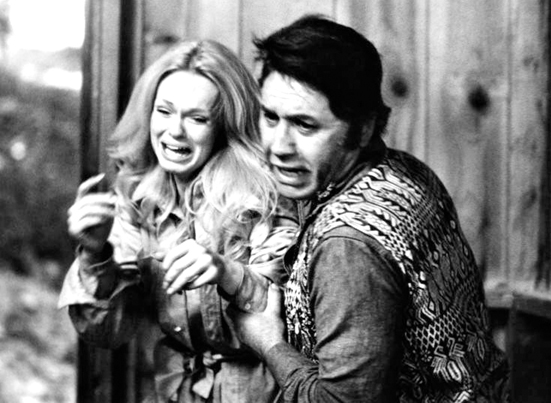
While best known for joining the cast of the popular CBS spy series “Mission: Impossible” for the last two seasons in the early 70s, Lynda Day George became something of a minor horror movie icon before retiring from acting in the late 80s.
In the horror realm, she portrayed characters threatened by an army of ants (“Ants,” 1977), a pack of wild dogs (“Day of the Animals,” 1977), a demonic force (“Beyond Evil,” 1980), a haunted mirror (“Fear No Evil,” 1969), a chainsaw-wielding killer (“Pieces,” 1982), and even a deranged undertaker’s assistant in “Mortuary,” her final film in 1983.
“I enjoyed doing them, but I also love comedy and drama,” said Day George from her home in Sequim, Washington.
Off-screen, the actress also experienced considerable drama, although horror might be a more appropriate description of her personal tragedies including the loss of two husbands – one succumbing to cancer and another from a sudden heart attack.
Actor Christopher George, Day George’s second husband of some 13 years, died just weeks after the release of “Mortuary” which co-starred the husband-and-wife acting team. She continued to guest-star in another half-dozen TV shows during the remainder of the decade before officially retiring, eventually remarrying in 1990 and later moving to Washington.
“After Chris died, I needed to take care of my family,” she explained. “I’ve also lost my mother, father, step-dad, and brother, so there’s been a lot of loss to deal with. But right now, I’m feeling great living here in Washington and have a wonderful life with my daughter and friends. My house is between the ocean and an inlet, and I love it here. I do a lot of gardening and I’m involved with many local groups including the theater.”
Despite the tragedies, Lynda has retained her genial nature and joyful spirit and still sports her trademark long blonde hair. Her positive attitude and sense of humor have clearly helped her survive the personal hardships as well as her past macabre movies such as the gruesome theme of “Day of the Animals,” which depicted the cast being mauled by enraged birds, dogs, wolves, bears, rats, and snakes.
She remembers filming was periodically paused when fellow actors including Leslie Nielsen, Michael Ansara, and Richard Jaeckel would break out in laughter.
“We just had so much fun making it,” she recalled. “Michael was a terrific, funny guy. Richard was a treasure, just a sweetheart. Every time I saw him after that he was just a big pile of sugar. And Leslie Nielsen could make you laugh at the drop of a hat – he was a one-man riot!”
In one scene, crazed dogs were required to leap through a cabin window and attack the characters. “I could be petting one, then the trainer would give a command and it would take off like a shot or become threatening and begin growling. They were terrific animal actors.”
An animal lover herself who shares her home with several dogs and cats, Day George not only enjoyed working with the animals but, as a longtime environmentalist, embraced the movie for bringing attention to ozone layer depletion, a significant environmental concern in the 70s (and bizarrely responsible for the creatures’ aggression in the film’s script).
While the concerns of ozone depletion have been replaced by global warming worries, Day George remains optimistic about the planet’s future despite widespread gloomy predictions.
“We have so many extraordinary people who are teaching us more and more about our planet. Bless them all.”
Nick Thomas teaches at Auburn University at Montgomery, in Alabama, and has written features, columns, and interviews for numerous magazines and newspapers. See www.getnickt.org.

SPECIAL TO SNL: CELEBRATE AUTUMN BY “FALL PROOFING” YOUR HOME
Story by Joyce Clark, Executive Director – Saint Ann Retirement Center
Senior living communities are a popular choice for people with a history of falling down because typically the building has design features to help reduce fall risk. Minimum thresholds, walk-in showers, handrails, contrasting colors, low-pile flooring, and non-glare lighting are examples of some senior living building amenities that help to lower fall incidents. You can implement these and other safety enhancements in your own home.
As people age they experience physical and lifestyle changes that can also lead to falls. Health conditions such as Parkinson’s disease, stroke, heart arrhythmias, dehydration, inner ear problems, vertigo, and urinary tract infection can increase a person’s chance of falling. Other risk factors include: * Dizziness * Foot problems like numbness, corns, bunions, ingrown nails, or ulcerations * Cataracts, glaucoma, depth perception and vision problems * Weak muscles or poor balance * Confusion or memory loss * Drinking too much alcohol * Vitamin D deficiency
It is a good idea to show a complete list of all medications, herbs, and remedies to your physician at each visit to help maintain safety and good health. Medication side effects or taking a number of medications at the same time can also increase fall risk. Even some over-the-counter medicines can affect balance and walking steadiness. Medications that most commonly cause blurred vision, dizziness, unsteadiness, drowsiness, or difficulty thinking include: * Blood pressure lowering medications * Sleep aids and sedatives * Antidepressants and psychotropics * Anticonvulsants for epilepsy
Some other general tips to reduce fall risk are: * Have your eyes and vision examined annually. * Stay physically active. Exercise helps to prevent falls, especially activities that enhance balance and coordination. A lot of exercise and stretching can be done from or using a sturdy chair for balance. * Wear shoes with non-slip soles. Socks can be a slipping risk. * Wear pants and clothing that are properly hemmed and don’t drag on the ground. * Take your time moving from a lying or sitting position to standing. * Use the arms of sturdy furniture when you sit down, reach, or stand up. * Use a reacher to retrieve items from the floor without bending over and from high shelves without using a footstool. You can use a reacher to wipe up spills while seated or standing. * Keep a mobile telephone nearby in an easy to reach location. * Wear an emergency call pendant or have “Alexa” in different rooms programmed to call for help when requested.
FLOORS AND FURNITURE
* Clean up clutter. Move newspapers, furniture, plants, and electrical cords out of traffic areas.
* Store clothing, towels, and household items where you can safely reach them.
* Eliminate uneven floor surfaces. Replace high doorway thresholds between rooms with low, beveled ones, or remove them.
* Replace thick carpets with dense, low-pile carpet or leave the floors uncovered.
* Arrange furniture to give you plenty of room to walk freely.
* Secure carpets to the floor and stairs. Remove throw rugs. Use non-slip rugs or attach rugs to the floor with double-sided tape.
* Put non-slip tape strips on steps, bathtub, and floors.
BATHROOM
* Use a shower chair / bench.
* Rinse all soap from tub / shower before getting out.
* Install adjustable height or hand-held showerhead.
* Mount grab bars with secure reinforcement at the toilet, bath, and shower walls.
* Secure bath mats with non-slip, double-sided rug tape.
* Install a night-light to help you get to the bathroom safely. There are also motion detector versions that automatically light up as you approach the area.
BEDROOM
* Sit in a sturdy armchair to dress and undress.
* Use a long-handled shoehorn to put on shoes without bending over.
* Use a dressing stick to pull on pants or skirts, take off socks, and reach hanging clothes.
* Place a portable commode or a plastic urinal near your bed.
KITCHEN
* Keep clean pans on the stove or in a countertop rack instead of hanging or putting them in a cabinet.
* Store plates, bowls, cups, and other frequently used items in an easily accessible drawer or shelf.
* Sit in a sturdy chair when you cut vegetables or do other kitchen tasks.
* Install slide-out shelving or a lazy susan.
* Use a wheeled cart for extra storage and to help move heavy items. For example, use it to move a dish from the refrigerator to the oven.
* Keep the floor dry. Have paper towels and a reacher handy for cleanup.
STAIRWAYS
* Make sure handrails are securely fastened.
* Install handrails on both sides of steps.
* Put non-slip tape on steps.
* Turn on lights before going up or down stairs.
* Take a pause before going up or down stairs.
LIGHTING
* Place nightlights in hallways, bedrooms, bathrooms, kitchen, and stairways.
* Install light switches at the top and bottom of stairs.
* Place a lamp near your bed. Touch on/off lamps are easier to use.
* Add lighting to dark spaces, entrances, and walkways. Motion detector lights can be a good option when they are set to stay on for a while.
* Keep a flashlight by your bed and in other easy to find locations in case the power goes out.
* Use light bulbs that have the highest wattage recommended for the fixture.
About Joyce: Joyce Clark is the Campus Director of Saint Ann Retirement Center, which offers independent and assisted living. She says watching people regain their strength, balance, and health is one of her team’s greatest rewards.
Clark encourages people to be extra careful at home getting in and out of the bathtub, where many people tend to fall. Call Lisa at Saint Ann Retirement Center, (405) 721-0747 Ext #322, if you would like more tips and helpful information.

Training Offered to Help With Dementia Empathy and Care Strategies
The Oklahoma Dementia Care Network at the University of Oklahoma Health Sciences Center will present a Training for Trainers for health professionals, in November. The event will be hosted by the Donald W. Reynolds Section of Geriatric Medicine at the OU College of Medicine and the department of Health Promotion Sciences at the OU Hudson College of Public Health.
The seminar is designed to elevate the level of care for persons living with dementia and to enhance encounters with older adults with cognitive impairment. Dementia is the loss of cognitive functioning that becomes more common as people grow older, affecting approximately one-third of persons over age 85.
OkDCN’s Training for Trainers is offered at no cost to participants. Topics covered will include: person-centered dementia care, infection control in dementia care, skin integrity in dementia care and end of life in dementia care. Participating educators/coordinators will receive a certificate of completion. Presenters include: Thomas Teasdale, DrPH, FGSA, FAGHE; Andrea Golden-Pogue, R.N., MSN; and the OkDCN team.
The training is scheduled from 9 a.m. to 4 p.m., November 17, at MetroTech Springlake Campus Business Development Center, 199 Springlake Drive, Room 123, Oklahoma City. To register, go to: ouhealth.com/events-calendar/event-signup/?Event=24744. For more information, please email your name, email and organization to okdcn@ouhsc.edu.
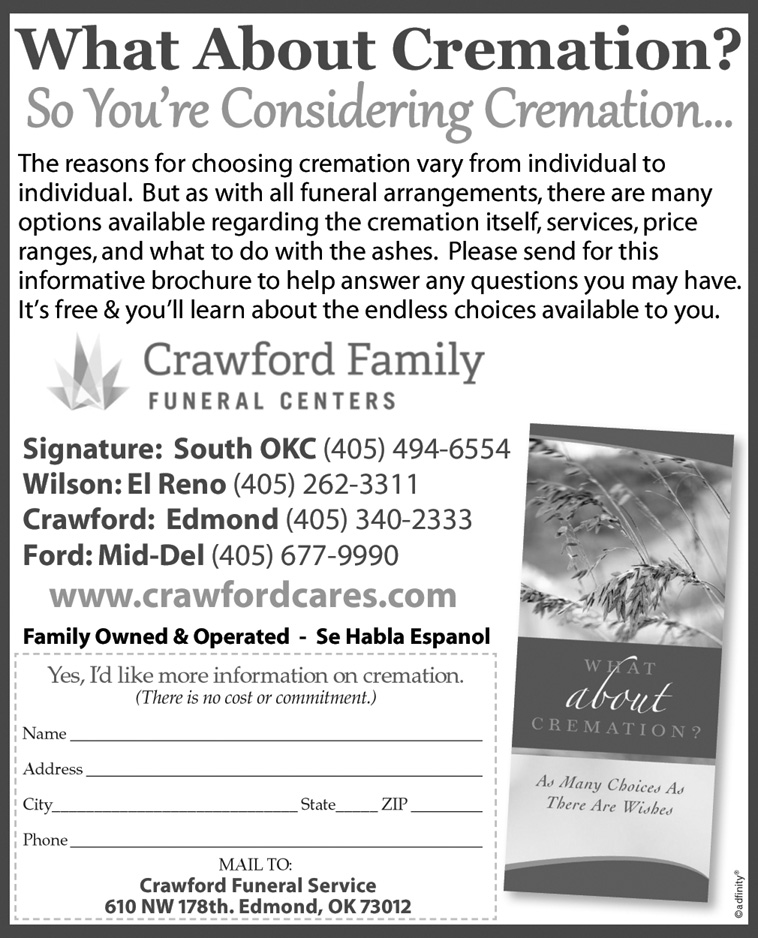
Volunteer Still Giving Back at 102
Integris Bass Baptist Health Center –
Volunteers at INTEGRIS Bass Baptist Health Center contribute their time and talents to help patients in a number of ways. Ruby Wilson gives her time and talent through crocheting beautiful lap blankets and baby caps. The thing about Ruby is, she will celebrate her 102nd birthday later this month.
Ruby has been a Bass volunteer since 2018, and in that time has contributed nearly 2,500 hours and crocheted dozens of items for babies and cancer patients.
“We offer the afghans to all of our patients receiving treatment,” oncology nurse Sandy Gordon said. “The patients are always excited to receive the blankets, and it’s nice that we can offer them. It’s always a feel-good moment. They often comment about the beautiful colors and how warm and comforting it is to have the handmade blanket.”
Ruby resides at Golden Oaks Village in Enid and still lives independently. While her mobility is limited, she still gets around in her little red power chair. When Ruby is not busy crocheting, she enjoys playing cards and bingo with her friends and reading.
According to Ruby’s daughter-in-law, Sherry Wilson, who is also a volunteer at Bass, Ruby finds great joy and pride in serving her community.
We are grateful for Ruby, Sherry and all of our incredible volunteers at INTEGRIS Health, and we wish Ruby a very happy birthday!






